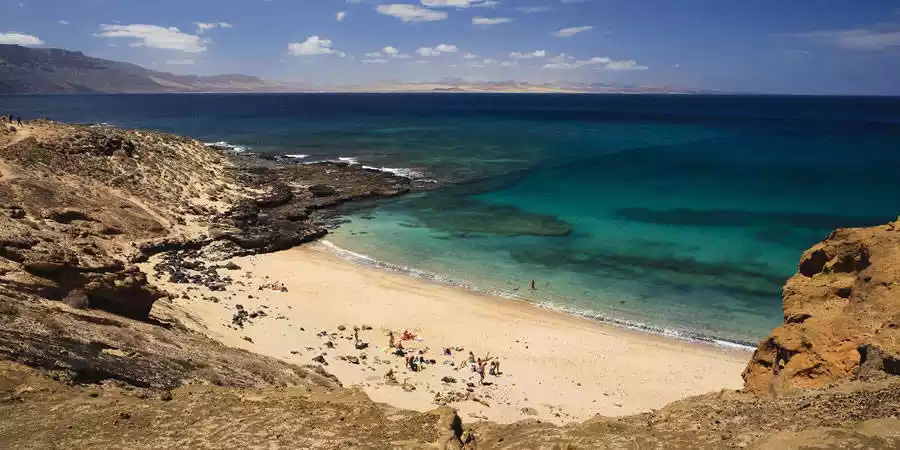
When you venture from Caleta de Sebo towards the southern beaches, such as Salado and La Francesa, you cannot help but admire the imposing silhouette of Montaña Amarilla, with its yellow and ochre tones standing out in the landscape.
At a height of 172 meters, this volcano is one of the four volcanic groups of La Graciosa that you cannot miss during your visit to the island. It is an emblematic point of the Chinijo archipelago and the Canary Islands in general.
The yellow, ochre, brown, and reddish tones of Montaña Amarilla contrast beautifully with the turquoise and green of the crystal-clear waters that surround it, as well as with the small cove of golden sand located right at its feet: Playa de la Cocina. This charming beach, with its calm waters, is ideal for swimming and practicing snorkeling.
With an average width of about 50 meters, it is a true luxury; its golden sand, calm sea, and turquoise and green waters...
No one should miss the spectacle of the sunset from Playa de la Cocina, as the sun sets on the horizon, the mountain takes on yellowish tones that leave no one indifferent.
To explore Montaña Amarilla, you can embark on an easy yet spectacular 6-kilometer route from Caleta de Sebo. You can make the journey by bike, taxi, or on foot, taking approximately an hour and a half while enjoying the beautiful landscapes presented along the way.
Depending on the time of year, it may be more advisable to take a 4x4 taxi to Playa de la Francesa, where taxi access ends, and then walk to Montaña Amarilla to avoid the heat of the journey, as there is no shade. If you prefer to go by bike, you can leave it in the bike parking area just before the beach and then walk leisurely.
Before reaching Montaña Amarilla, you will find a small trail on the hillside marked by the footprints of those who have traveled the path to the summit. The ascent may be a bit challenging toward the end due to the slope of the terrain, but the effort is worth it. From the summit, you will enjoy spectacular views of the entire island, including the other three volcanic groups, the Famara Cliffs, and the El Río area.